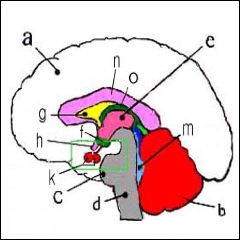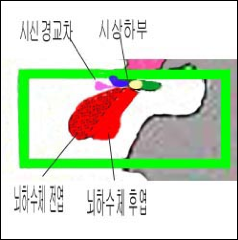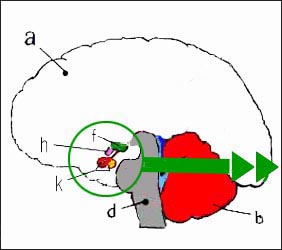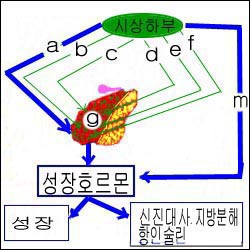사춘기와 사춘기 아이들, 10대 아이들(십대들), 퓨버티, 청년, 소년 소녀, Adolescence and Adolescents, Teenagers, Puberty, Young adults(Youth), Boys and girls
사춘기와 사춘기 아이들 Adolescence and Adolescents
- 신장과 체중의 성장이 가속도를 내어 쑥쑥 자라고,
- 2차 성징이 나타나고 성인 남녀성의 2차 성징 철럼 계속 진행되고
- 아기를 생산할 능력이 생기고,
- 여아들의 몸매는 성인 여성들의 몸매로 변화되고,
- 남아들의 몸매는 성인 남성들의 몸매로 변화되고
- 골 성장이 가속도를 내어 진행되다가 성인의 신장과 체중에 이르면 중지되는 기간을 사춘기(Adolescence)라 한다.
- 아이들 기(소아기) 아이들은 “사춘기 다리”를 건너야만 성년기로 가게 된다. 제23권 사춘기 아이들 성장 발육 질환 출처 참조 문헌-1, 2 참조.
- 사춘기 기간에 있는 아이들을 사춘기 아이들(Adolescents) 이라고 한다.
- 사춘기 아이들을 10대 아이들, 또는 청소년이라고 부르기도 한다.
- 사춘기 아이들, 10대 아이들, 청소년들은 동의어가 아니다.
- 10대 아이들 중 일부는 사춘기 아이들에 속하고 사춘기 아이들의 일부는 10대 아이들에게 속한다.
- 아주 어리지도 않고 다 성장 하지 않은 소녀소년들, 사춘기 아이들과 18세부터 24세 이전 성년들이 “청소년”층에 들어갈 수 있다.
- 청소년에는 학령기 아이들, 사춘기 아이들, 10대 아이들, 18~24세 젊은 성년들이 포함된다.
- 사춘기가 시작되고 진행되고 사춘기가 다 끝나는 나이는 각 사춘기 아이들, 남녀 성별, 문화, 환경, 타고난 체질 등에 따라 다르다.
- 대부분의 여아들의 사춘기는 생후 9~11세 무렵에, 남아들의 사춘기는 여아들보다 1년 반에서 2년 정도 더 늦게 즉, 11~13세에 시작된다.
- 사춘기가 시작돼서 끝나는 총 기간은 약 8~10년 동안이다.
- 섹스피어는 사춘기 아이들을 “Not yet old enough for a man nor young enough for a boy” 라고 했다. 아직 성년이 되기는 이르고 어린 아이들이라고 부르기는 너무 나이 많은 소아들을 사춘기 아이들이라고 했다.
10대 아이들(십대들) Teenagers
- 13~19(Thirteen~19teen)세 연령층에 있는 아이들을 10대 아이들, 십대들, 또는 십대라고 한다.
- 8세에 여아들에게 사춘기가 일찍 시작 할 때도 있고,
- 12~13세에 늦게 사춘기가 시작할 때도 있다.
- 10대 아이들이란 말과 사춘기 아이들이란 말은 동등어는 아니다.
- 10대 아이들의 거의가 사춘기 아이들에 속한다는 것은 쉽게 이해할 수 있다. 그러나 모든 사춘기 아이들은 10대 아이들에 속하지 않는다.
- 그렇지만 의학계에서 10대 아이들이란 말과 사춘기 아이들이란 말을 동의어로 쓸 때도 있다.
퓨버티 Puberty
- 신생아기, 영유아기, 학령기, 사춘기, 성년기, 또는 노년기 등으로 한 평생을 여러 기로 나누어 생각할 수 있다.
- 퓨버티는 “아이들기(소아기)에서 성인기로 넘어가는 한 평생의 한 단계”이다.
- 퓨버티를 한 평생 중 “어려운 시기”, “혼동시기”, “복잡한 시기”, 또는 “이해하기가 어려운 시기”라고 표현하기도 한다.
- 퓨버티에서 흔히 볼 수 있는 복잡하고 이해하기가 어려운 여러 가지 문제의 대부분은 시간이 가면 자연적으로 풀리는 것이 보통이다.
- 퓨버티를 의학적 면에서 정의한다면, “2차 성징이 나타나고 아기를 생산할 수 있는 능력”이 있는 사춘기의 한 단계를 퓨버티라고 한다.
- 다시 말하면, 퓨버티는 사춘기에 속하는 한 단계이다.
- 이런 이유로 흔히들 사춘기란 말과 퓨버티란 말은 동등어로 쓰기도 한다. 1,2.
- 정확하게 따지면 사춘기란 말과 퓨버티란 말은 다른 말이다.
- 퓨버티를 사춘기 또는 청춘기라고도 한다.3.
- 개인, 유전, 호르몬, 건강상태, 영양, 주위환경, 사회, 경제 등에 따라 퓨버티가 시작하는 시기, 지나가는 과정, 퓨버티에 생기는 문제와 그의 정도는 다를 수 있다.
- 8~10세경 여아들에게 사춘기가 온다.
- 뇌하수체 전엽에서 황체 형성 자극 호르몬(항체 호르몬)과 난포 자극 호르몬이 분비되고, 그 결과로 난소에서 난포가 성숙해지고 난자가 배란된다.
- 난자가 배란된 후 난포는 황체가 되며 그 황체에서 여성 성 스테로이드 호르몬이 생성된다.
- 그 결과로 난자가 성숙하고 배란이 된다.
- 황체에서 에스트로겐과 프로게스테른이 생성되고 그 영향을 받아 짧은 기간에 여아들이 키가 가속도로 커지고 유방이 발달되고 치모가 나고 겨드랑이 털이 나는 등 여아 2차 성징이 자연 섭리에 따라 착착 진행된다.
- 이때부터 여드름이 나고 땀이 많이 나기 시작한다. 유방이 발달되기 시작한 후 약 2년 후에 초경을 하는 것이 보통이다.
- 대개 11~12세경에 여아들의 신장은 최고 속도를 내어 자란다. 초경을 한 후 1~2년 동안에는 신장은 전보다 천천히 자라는 것이 보통이다.
- 에스트로젠이 왕성히 분비되고 그로 인해 몸의 여기저기에 지방이 많이 축적된다.
- 일반적으로 여아들에게 퓨버티가 오는 과정은 각 여아와 다른 조건에 따라 다소 다르다.
- 9~14세 경 남아들에게 사춘기가 오는 것이 보통이다(연구 통계에 따라 연령 차이가 많음).
- 남아들에게 사춘기가 오면 뇌하수체 전엽에서 황체 형성 자극 호르몬(LH)과 난포 자극호르몬(FSH)의 분비가 증가되고 그로 인해 고환에서 테스토스테론 분비가 시작되고 테스토스테론의 분비량이 증가되고 그의 영향을 받아 고환이 커지고 자지가 커지고 길어지고 정자가 생성되고 결국에는 사정한다.
- 이와 같이 남아들에게 2차 성징이 나타난다.
- 남아들에게 2차 성징이 나타날 때 고환이 제일 먼저 커지기 시작하고 그 후 약 6개월 뒤에 치모와 겨드랑이 털과 여드름이 나기 시작하는 것이 보통이다.
- 자지는 성인 남성의 자지 크기와 비슷할 때까지 점점 더 커진다.
- 얼굴에 나는 수염은 치모가 나기 시작한 후 약 3년 뒤에 난다.
- 13~14세경에 키가 가장 빨리 자란다.
- 퓨버티가 온 여아들은 난자를 생산하고 남아들은 정자가 생산할 수 있다.
- 성교하면 아기를 생산할 수 있다.


그림 1-2. 뇌하수체와 시상하부 해부도
Copyright ⓒ 2012 John Sangwon Lee, MD., FAAP


그림 1-4. 뇌하수체와 시상하부.
a-성장호르몬유리호르몬(성장호르몬분비촉진호르몬), b-부신피질자극호르몬유리인자(부신피질자극호르몬분비촉진호르몬),
c-갑상선 자극호르몬유리호르몬(갑상선자극호르몬분비촉진호르몬), d-생식선자극호르몬유리호르몬(생식선자극호르몬분비촉진호르몬), e-황체 자극호르몬유리호르몬, f-프로팩틴유리인자(프로팩틴분비촌진인자), g-뇌하수체전엽, m-소마토스타틴(성장억제호르몬)
Copyrightⓒ 2012 John Sangwon Lee, MD., FAAP
청년 Young adults(Youth)
- 15~18세 사춘기 아이들과 19-25세 된 성년들을 통틀어 “청소년”이라고 한다.
- 만 18세 이후부터 만 25세까지의 젊은 한창 나이에 있는 젊은 성인들을 청년이라하고 청년은 성인층에 속한다.
소년 소녀 Boys and girls
아주 어리지도 않고 완전히 성숙되지 않은 18세 이하 아이들을 소년소녀라고 한다.
Adolescence and Adolescents, Teenagers, Puberty, Young adults(Youth), Boys and girls
Adolescence and Adolescents
• Accelerate growth in height and weight,
• Secondary sexual characteristics appear and the secondary sexual characteristics of adult males and females continue
• gain the ability to produce babies;
• The body of girls is changed to that of adult women,
• The body of boys is changed to that of adult men,
• Adolescence is a period in which bone growth accelerates and stops when it reaches adult height and weight.
• Childhood (childhood) Children must cross the “puberty bridge” to reach adulthood. Volume 23 Growth and Developmental Disorders in Adolescent Children See References 1 and 2.
• Children during puberty are called Adolescents.
• Adolescents are sometimes referred to as teenagers or adolescents.
• Adolescents, teens, and adolescents are not synonymous.
• Some teenage children belong to adolescents and some adolescents belong to teenage children.
• Girls and boys who are not very young and not fully grown, adolescents and adults between the ages of 18 and 24 may enter the “youth” group.
• Adolescents include school-age children, adolescents, teens, and young adults aged 18-24 years.
• The age at which puberty begins and progresses and ends at the end of puberty varies according to each adolescent child, gender, culture, environment, and innate constitution.
• Puberty in most girls begins around the age of 9 to 11 years of age, and puberty in boys begins a year and a half to two years later than in girls, ie, ages 11 to 13.
• The total period from the onset of puberty to the end of puberty is about 8 to 10 years.
• Sexpier referred to adolescents as “Not yet old enough for a man nor young enough for a boy.” Adolescents were defined as children who were too young to be called children who had not yet reached adulthood.
Teenagers
• Children in the 13-19 (Thirteen to 19teen) age group are referred to as teens, teens, or teens.
• Puberty sometimes begins early in girls at age 8;
• Sometimes puberty begins late, at the age of 12 or 13 years.
• Teenagers and adolescents are not synonymous.
• It is easy to understand that the majority of teenage children belong to adolescents. However, not all adolescents are teenagers.
• However, the medical community sometimes uses the terms teenage and puberty as synonyms. Puberty
• You can think of one life as being divided into several phases, such as newborn, infancy, school age, puberty, adulthood, or old age.
• Puberty is “a stage in one’s life, from childhood (infancy) to adulthood”.
• Some people describe their future life as “a difficult period,” a “confusion period,” a “complex period,” or a “difficult period to understand”.
• Most of the complex and difficult-to-understand problems that are common in Puberty usually resolve spontaneously over time.
• If we define puberty in a medical sense, the stage of puberty in which “secondary sexual characteristics appear and the ability to produce babies” is called puberty.
• In other words, puberty is a stage belonging to puberty.
• For this reason, the terms puberty and puberty are often used as equivalents. 1,2.
• Strictly speaking, puberty and puberty are two different things.
• Puberty is also called puberty or adolescence.3.
• Depending on the individual, genetics, hormones, health status, nutrition, surrounding environment, society, economy, etc., the timing of the beginning, the process of passing, and the problems and severity of the future may differ.
• Puberty occurs in girls around the age of 8-10.
• Luteinizing hormone (antibody hormone) and follicle-stimulating hormone are secreted by the anterior pituitary, resulting in maturation of the follicle in the ovary and the release of an egg.
• After ovulation, the follicle becomes the corpus luteum, which produces female sex steroid hormones.
• As a result, the egg matures and ovulates.
• Estrogen and progestern are produced in the corpus luteum and under the influence of them, the girls’ secondary sexual characteristics, such as an accelerated increase in height, breast development, pubic hair, and armpit hair, progress in a short period of time according to the natural providence.
• From this point on, you start to get pimples and sweat a lot. Menarche usually occurs about two years after the breasts begin to develop.
• Usually around the age of 11-12, girls’ heights grow at their highest rate. For 1 to 2 years after menarche, it is normal for the kidneys to grow more slowly than before.
• Estrogen is secreted vigorously, and as a result, a lot of fat is accumulated in various parts of the body.
• In general, the process by which puberty comes to girls is somewhat different for each girl and different conditions.
• It is common for boys to reach puberty around the age of 9 to 14 years (there is a large age gap according to study statistics).
• When boys reach puberty, the anterior pituitary gland secretes luteinizing-stimulating hormone (LH) and follicle-stimulating hormone (FSH). It gets bigger and the penis gets bigger and longer, sperm is produced and eventually ejaculates.
• In this way, secondary sexual characteristics appear in boys.
• When secondary sexual characteristics appear in boys, it is normal for the testicles to start to grow first, and then pubic hair, armpit hair, and acne begin to appear about 6 months later.
• The penis gets bigger and bigger until it is about the size of an adult male’s penis.
• Facial beards appear about 3 years after the hair starts to grow.
• You grow the fastest around the age of 13 or 14.
• Girls with Puberty can produce eggs and boys can produce sperm.
• Intercourse can produce babies.

Figure 1-1. The pituitary gland and brain side view a – cerebrum, b – cerebellum, c – pons, d – medulla oblongata, f – hypothalamus, g – diencephalon, h – optic nerve junction, k – anterior and posterior lobe of the pituitary gland, m – fourth ventricle, n – corpus callosum, o – 3rd ventricle Source – Gray’s anatomy

Figure 1-2. The pituitary gland and hypothalamus anatomy Copyright ⓒ 2012 John Sangwon Lee, MD., FAAP

Figure 1-3. Pituitary gland and brain side view. a – cerebrum, b – cerebellum, d – medulla oblongata, f – hypothalamus, h – optic nerve junction, k – anterior and posterior lobes of the pituitary gland Source: Gray’s anatomy

Figure 1-4. pituitary gland and hypothalamus. a-growth hormone-releasing hormone (growth hormone-releasing hormone), b-cortico-stimulating hormone-releasing factor (adrenocorticotropic hormone-releasing hormone), c-thyroid-stimulating hormone-releasing hormone (thyroid-stimulating hormone-releasing hormone), d-gonadotropin-releasing hormone (gonadotropin-releasing hormone), e-luteinizing hormone-releasing hormone, f-prolactin-releasing factor (prolactin secretion) Rural factor), g- anterior pituitary lobe, m- somatostatin (growth inhibitory hormone) Copyright© 2012 John Sangwon Lee, MD., FAAP
Young adults(Youth)
• Adolescents between the ages of 15 and 18 and adults between the ages of 19 and 25 are collectively referred to as “youth”.
• Young adults in their prime from the age of 18 to 25 are called youth, and young people belong to the adult group.
Boys and girls
Boys and girls children under the age of 18 who are neither very young nor fully mature are called boys and girls.
출처 및 참조 문헌 Sources and references
- NelsonTextbook of Pediatrics 22ND Ed
- The Harriet Lane Handbook 22ND Ed
- Growth and development of the children
- Red Book 32nd Ed 2021-2024
- Neonatal Resuscitation, American Academy of Pediatrics
- 부모도 반의사가 되어야 한다-소아 가정간호 백과 제14권 소아청소년 내분비, 유전, 염색체,대사, 회귀병-성장차트, 부록 0~36개월 남아성장차트, 2~18세 남아 성장차트, 0~36개월 여아 상장차트, 2~18세 여아 성장차트
- The pregnancy Bible. By Joan Stone, MD. Keith Eddleman,MD
- 임신에서 신생아 돌보기까지. 이상원
- Growth and development of children by Watson & George. H. Lowrey.
- BIBLE
- How to love really your teenager
- How to really love your child Ross Campbell
-
Good Behavior Stephen W. Garber, Ph.D. and other
-
10대 아들 딸 이렇게 사랑해 키워라 이상원 역
- www.drleepediatrics.com 제1권 소아청소년 응급 의료
- www.drleepediatrics.com 제2권 소아청소년 예방
- www.drleepediatrics.com 제3권 소아청소년 성장 발육 육아
- www.drleepediatrics.com 제4권 모유,모유수유, 이유
- www.drleepediatrics.com 제5권 인공영양, 우유, 이유식, 비타민, 미네랄, 단백질, 탄수화물, 지방
- www.drleepediatrics.com 제6권 신생아 성장 발육 육아 질병
- www.drleepediatrics.com제7권 소아청소년 감염병
- www.drleepediatrics.com제8권 소아청소년 호흡기 질환
- www.drleepediatrics.com제9권 소아청소년 소화기 질환
- www.drleepediatrics.com제10권. 소아청소년 신장 비뇨 생식기 질환
- www.drleepediatrics.com제11권. 소아청소년 심장 혈관계 질환
- www.drleepediatrics.com제12권. 소아청소년 신경 정신 질환, 행동 수면 문제
- www.drleepediatrics.com제13권. 소아청소년 혈액, 림프, 종양 질환
- www.drleepediatrics.com제14권. 소아청소년 내분비, 유전, 염색체, 대사, 희귀병
- www.drleepediatrics.com제15권. 소아청소년 알레르기, 자가 면역질환
- www.drleepediatrics.com제16권. 소아청소년 정형외과 질환
- www.drleepediatrics.com제17권. 소아청소년 피부 질환
- www.drleepediatrics.com제18권. 소아청소년 이비인후(귀 코 인두 후두) 질환
- www.drleepediatrics.com제19권. 소아청소년 안과 (눈)질환
- www.drleepediatrics.com 제20권 소아청소년 이 (치아)질환
- www.drleepediatrics.com 제21권 소아청소년 가정 학교 간호
- www.drleepediatrics.com 제22권 아들 딸 이렇게 사랑해 키우세요
- www.drleepediatrics.com 제23권 사춘기 아이들의 성장 발육 질병
- www.drleepediatrics.com 제24권 소아청소년 성교육
- www.drleepediatrics.com 제25권 임신, 분만, 출산, 신생아 돌보기
- Red book 29th-31st edition 2021
- Nelson Text Book of Pediatrics 19th- 21st Edition
- The Johns Hopkins Hospital, The Harriet Lane Handbook, 22nd edition
- Pediatric Nutritional Handbook American Academy of Pediatrics
- 소아가정간호백과–부모도 반의사가 되어야 한다, 이상원 저
- Sources and references on Growth, Development, Cares, and Diseases of Newborn Infants
- Emergency Medical Service for Children, By Ross Lab. May 1989. p.10
- Emergency care, Harvey Grant and Robert Murray
- Emergency Care Transportation of Sick and Injured American Academy of Orthopaedic Surgeons
- Emergency Pediatrics A Guide to Ambulatory Care, Roger M. Barkin, Peter Rosen
- Quick Reference To Pediatric Emergencies, Delmer J. Pascoe, M.D., Moses Grossman, M.D. with 26 contributors
- Pediatric Nutritional Handbook American Academy of Pediatrics
- Pediatric Resuscitation Pediatric Clinics of North America, Stephen M. Schexnayder, M.D.
-
Pediatric Critical Care, Pediatric Clinics of North America, James P. Orlowski, M.D.
- Infectious disease of children, Saul Krugman, Samuel L Katz, Ann A.
-
Emergency Care Transportation of Sick and Injured American Academy of Orthopaedic Surgeons
- Habilitation of The handicapped Child, The Pediatric Clinics of North America, Robert H Haslam, MD.,
-
The Pediatric Clinics of North America, David Tunkel, MD., Kenneth MD Grundfast, MD
-
제22권 아들 딸 이렇게 키우세요 참조문헌 및 출처
-
Ambulatory Pediatrics, Green and Haggerty, Saunders
- School Health: A Guide For Health Professionals, American Academy of Pediatrics
- Kids Who follow, Kids who don’t
-
Loving Each Other Leo F Buscaglia, Ph, D.
-
진정한 자녀 사랑 나비게이터
Copyright ⓒ 2014 John Sangwon Lee, MD., FAAP
“부모도 반의사가 되어야 한다”-내용은 여러분들의 의사로부터 얻은 정보와 진료를 대신할 수 없습니다.
“The information contained in this publication should not be used as a substitute for the medical care and advice of your doctor. There may be variations in treatment that your doctor may recommend based on individual facts and circumstances.
“Parental education is the best medicine.